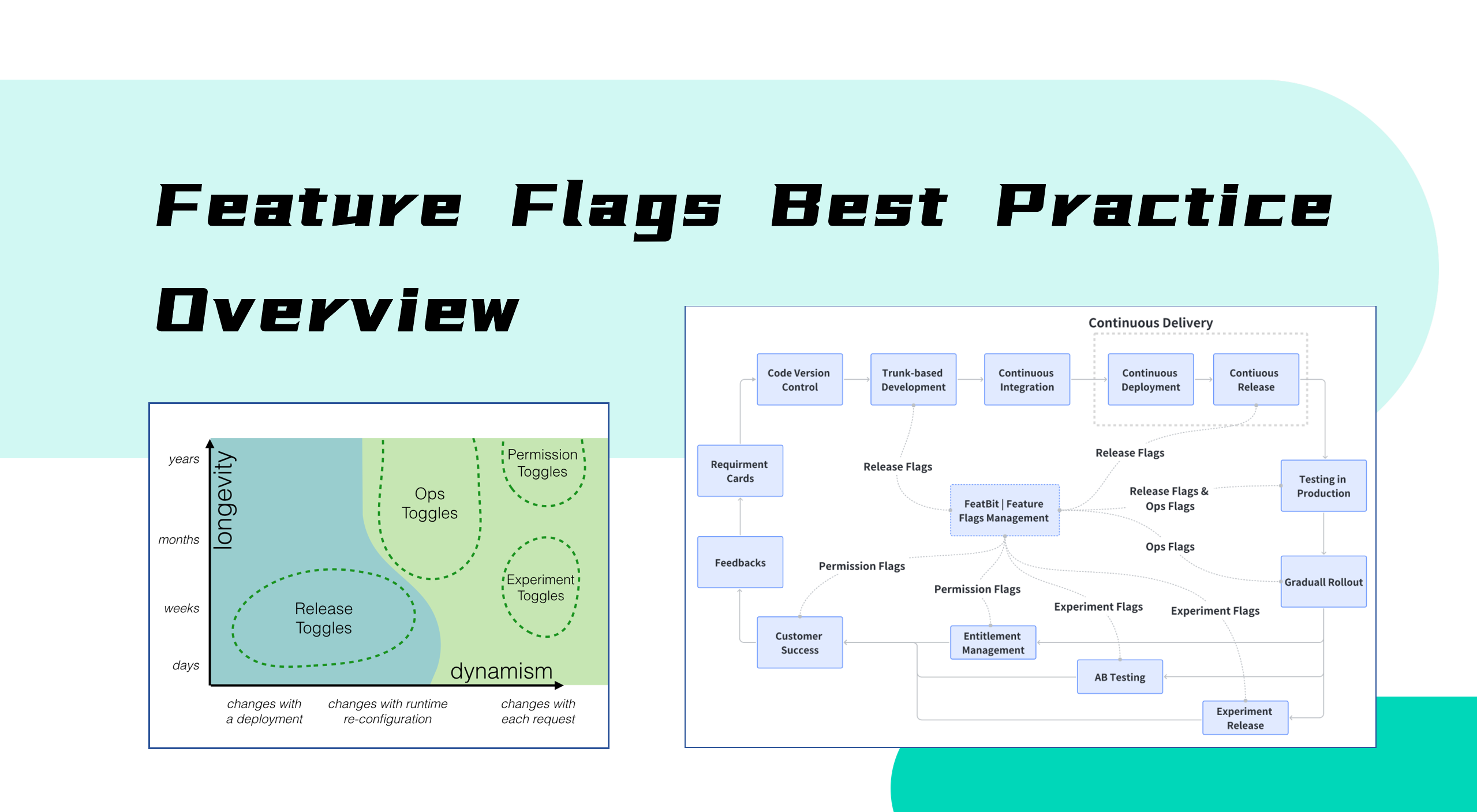Feature Flags Best Practice I - Overview

This article presents the overview of feature flags best practice, it will introduce feature flags technology step by step:
- What the Feature Flag is.
- How engineers use feature flag technology.
- How Feature Flags evolve into Feature Management.
- How Feature Management helps product and business teams.
- Using the lifecycle to represent feature flags throughout dev to business.
What's Feature Flag
Feature Flag is a modern engineering technology that decouples code deployments from feature releases, giving you control over who sees each feature and when they see it.
What a feature flag looks like
Feature Flags, in their simplest form, are just if conditions in your code check whether a certain feature is enabled. This allows us to deploy features even when they are not ready, meaning that our codebase is always deployable. This, in turn, enables continuous deployment even while the team is continuously pushing small commits to the main branch.
How engineering teams use feature flags
Feature flags help engineering teams to:
- Reduce delivery risk and deployment stress. Perform Testing in Production, Targeted rollouts/release progressions before rolling out the feature to all users.
- Accelerate feature releases. Decouple deployments from releases, decouple features from the entire application package, and follow trunk-based development.
- Enable experimental feature development.
- Faster incident resolution. Automatically disable buggy features when key service metrics exceed a certain threshold in your APM tool.
- Maintain high stability. Progressively migrate from a monolith to microservices, switch to a new database, and migrate infrastructure to the cloud.
What's Feature Management
Feature management is a new class of software development tools and techniques rooted in feature flags. It provides a holistic framework for feature flag-driven development, A/B testing, and experimentation, enabling teams to use flags on a massive scale across a variety of use cases.
How Feature Management empowers product and business
Feature management empowers all teams to deliver, control, experiment with, and monetize their software:
- Help product managers to improve user experience by measuring the impact of features’ rollouts, and running A/B tests to improve feature quality.
- Enable the Customer Success team to close more deals with live demos and feature trials at the push of a button. Help Support debug exactly which features and tests a customer has for faster resolution.
- Give Marketing and Design the ability to fine-tune target audiences, coordinate announcements, and manage special customer programs.
- Empower finance teams quickly get the billing report of how customers used and paid for the different features and subscriptions.
Categories and Lifecycle of Feature Flags
Feature Flag service covers the entire process from developing to delivering to customer success.
Four categories of Feature Flag are presented in the whole lifecycle: Release, Experiment, Ops, and Permission. One feature flag can be destroyed immediately after the Release phase. It can also be kept until the end. It all depends on how your team uses it.
Here's a diagram that makes it easy to understand the lifecycle of Feature Flags.
Conclusion
Feature flags management empowers all teams to deliver, control, experiment with, and monetize their software. FeatBit's customers say the Feature Flags Management Service bridges the gap between engineering teams and the business.